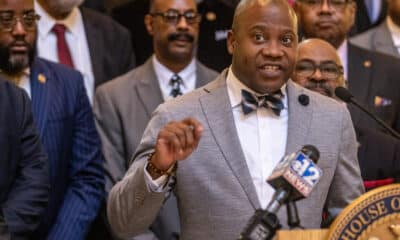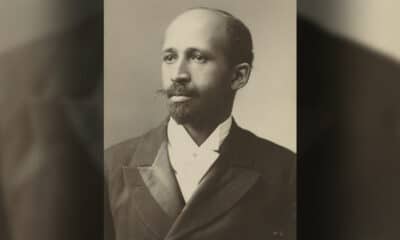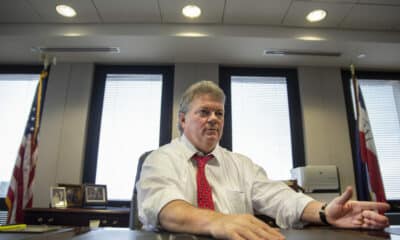Stefan Schmitt, Florida International University
Shortly after the fall of Bashar Assad in Syria in December 2024, reports emerged of mass graves being uncovered in liberated areas.
Grim as such discoveries are, they should come as little surprise. The scale of the regime’s torture and killings in its detention facilities became evident years earlier, when in January 2014 a forensic photographer defected and left the country with a cache of 55,000 photos of people who had been tortured and died in detention.
As an expert in forensic anthropology and mass casualties in conflict, I was asked to evaluate what became known as the “Caesar photographs.” What was clear to me then, and is even more so now, is that those photos represented a systematic approach to torturing, killing and disappearing massive numbers of people by the Assad regime.
With Assad now gone, the newly formed government of the Islamist group Hayat Tahrir al-Sham has vowed to seek justice for the crimes Syrians suffered under Assad. Doing so will be difficult, even with the civil war in Syria being one of the better monitored conflicts in recent history. Yet it is a task that is imperative for the sake of pursuing justice in a shattered country and reducing the likelihood of violence returning to Syria.
Holding perpetrators to account
Since Syria erupted into violence in 2011, several groups have been collecting evidence of human rights violations. These include the Syrian Justice and Accountability Center, the Syrian Observatory for Human Rights, the Syrian Emergency Task Force and the Commission for International Justice and Accountability. Internationally, the United Nations established an International, Impartial and Independent Mechanism for Syria in 2016 to assist any investigations and prosecutions of those responsible for serious violations of international law in Syria since March 2011.
Estimates of those killed since the start of civil conflict in 2011 range anywhere from 100,000 to over 600,000, with civilian deaths accounting for at least 160,000.
Many of these deaths have been at the hands of the Assad regime. But different armed groups, including the al-Nusra Front and Islamic State group, have also been accused of atrocities.
From the perspective of holding perpetrators accountable, that could complicate matters. The leader of now ruling Hayat Tahrir al-Sham is the founder of the al-Nusra Front and might not be willing to hold his group or others accountable or acknowledge the crimes of that group.

Bekir Kasim/Anadolu via Getty Images
Who investigates?
There are three dimensions of accounting for the missing following conflict. First, there is the task of identifying and repatriating the remains of those in mass graves to allow family and friends to grieve. Second, the rights of victims to know the truth about what happened to their loved ones needs to be addressed. And finally, the process needs to provide justice, accountability and reconciliation, regardless of who was responsible.
But before this can take place, the question of who is responsible for the accounting needs to be addressed.
Countries coming out of civil conflict have turned to different mechanisms, from truth commissions to criminal tribunals. In the former Yugoslavia and Rwanda, special U.N. courts were set up to investigate and prosecute perpetrators of grievous crimes. These tribunals were created as independent judicial bodies dedicated to investigating and prosecuting those most responsible for the crimes that had been committed during conflict.
Guatemala, which emerged from a decades-long civil war in 1996, turned to national human rights and victim organizations to take the lead in a process of “transitional justice.” This included the Commission for Historical Clarification, which through its investigation concluded that an estimated 200,000 people had been killed.
The nongovernmental Forensic Anthropology Foundation of Guatemala, or FAFG, has since 1993 formed a fundamental part of searching, identifying and repatriating the missing. FAFG collects personal information, DNA profiles and witness statements and is responsible for protecting the rights of victims’ families in Guatemala’s judicial system.
Its work continues to this day.
What crimes to include
As to the Syrian civil war, a decision over the scope of any investigation into the disappeared and dead will likewise have to be made.
Will it include all those missing and in mass graves in areas held by al-Nusra, the Islamic State group and other armed groups, as well as those killed by Assad? The fact that groups and individuals that now form the government could have been involved in human rights violations may risk future investigations being skewed toward just the victims of Assad.
Even if the scope was narrowed to Assad’s crimes, it’s unclear how far back one should go. Assad rule in Syria began more than 50 years ago under Assad’s father, Hafez al Assad. And killings and disappearances date back to the elder’s time in power, including the 1982 massacre in the city of Hama in which an estimated 20,000 to 40,000 were killed.
The role of the state
Another fact-finding question concerns the sharing of information between civil society groups and the state.
The information gathered on the war by various NGOs so far is technically held or “owned” by such groups, not the Syrian state. This is for a good reason, as victims trust these organizations to protect information from the perpetrators, some of whom might form part of the new government.
The International Commission on Missing Persons, an NGO with its seat in the Netherlands, gained its reputation while identifying the dead from the conflict in the former Yugoslavia in the 1990s and early 2000s. It has already collected and stored testimonies from over 76,200 Syrian relatives of more than 28,000 missing persons and has identified 66 mass grave locations. Other organizations have similar testimonies.
But to what extent will these groups share their data and analysis with a future Syrian state led by a rebel group that itself is accused of human rights violations, such as arbitrary detentions and torture?
At some point, the state of Syria will need to be involved in the process. Legally and in practice, the state issues a citizen’s “civil identity” through things such as a birth certificate that establish a person with rights and responsibilities. In the same manner, the state issues death certificates in which the manner of death determines any judicial reactions – such as a criminal investigation in cases where the death is due to homicide.
The state is also important in resolving issues such as inheritance and widower status.
Identifying the remains from the mass graves is therefore not just a “technical” issue dependent on cutting-edge DNA laboratories and missing-persons databases. It is also something that any future Syrian state should work toward, and then own and take responsibility for.
Shifting responsibility away from the state to an international body would not really help Syria develop its own accountability mechanisms or hold the government to delivering justice for the victims and their families.
In my view, empowering victims in this transitional justice process needs to be a priority for the Syrian state. This includes the establishment of a transparent forensic and investigative effort to address the concerns of families searching for loved ones.
It should not, I believe, be outsourced. From my experience with similar processes elsewhere, it is important that Syrians become “experts” in all aspects of this process. No doubt, the task will take time and searching for the truth about what happened, and will involve perpetrators and victims alike.
It might well be a painful and painstaking process. But it is a necessary one if postconflict Syrian is to hold to account those who attempted to “erase” the identity of victims by disappearing them, burying them in mass graves, or leaving them under the bombed rubble of their neighborhoods.![]()
Stefan Schmitt, Project Lead for International Technical Forensic Services Global Forensic Justice Center, Florida International University
This article is republished from The Conversation under a Creative Commons license. Read the original article.


























































